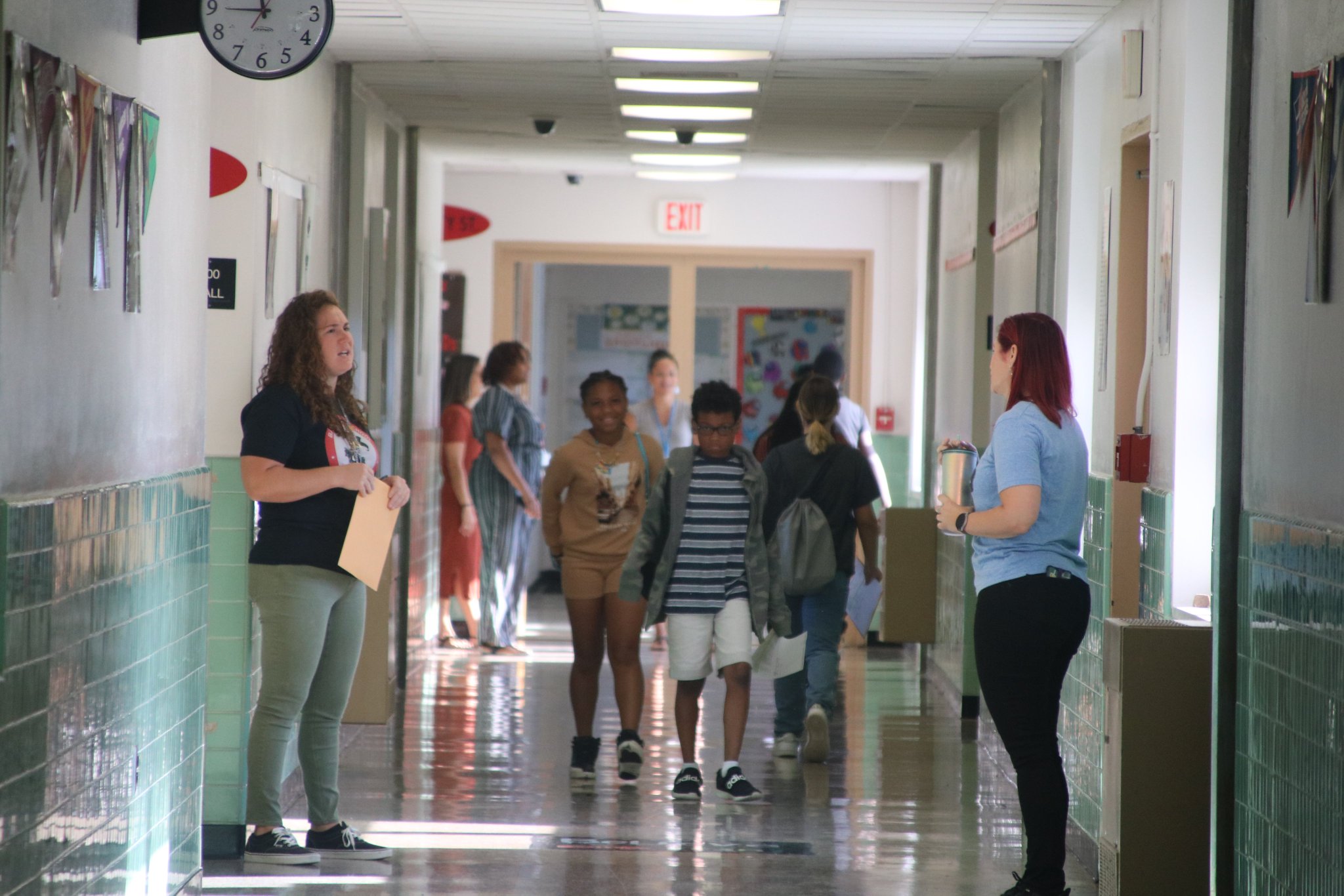Reflecting on the tenets that shape our educational practices is fundamental for …
Navigating a School Ban on Cellphones
Jennifer Livingstone

During lunch last academic year, sixth graders at Bayside Middle School in Virginia Beach engaged in boisterous rounds of “Uno” and tested their skills on a Simon game console by tapping out sound patterns.
To help alleviate separation anxiety following the ban on cellphones two years ago, Principal Sham Bevel at Bayside Middle School in Virginia Beach introduced strategies like getting students engaged in classic games, where the devices had to be kept in lockers during school hours.
However, the challenge remains in persuading students that there are more rewarding activities than posting TikTok videos or browsing friends’ Instagram content.
Comparing children’s attachment to cellphones to Linus’ attachment to his blanket, Principal Bevel humorously pointed out the dilemma.

Across the country, there has been a surge in imposing cellphone bans during school hours, with states like Virginia, Ohio, South Carolina, and districts like Los Angeles and New York gravitating towards such policies.
While deciding to remove phones during school hours may seem straightforward, the real challenge lies in determining acceptable storage solutions that satisfy both school staff and families. Implementing complete bans can cause anxiety among parents, while partial restrictions might burden teachers with enforcing rules during valuable class time.
As Todd Reid, spokesman for the Virginia Department of Education, pointed out, the crux lies in how these policies are put into practice. The agency is currently seeking public input on the best ways to execute Gov. Glenn Youngkin’s directive for phone restrictions to be in effect by Jan 1, with detailed guidance expected in mid-September.
One proposed method, requiring students to store phones in lockers, proves challenging to monitor effectively, as explained by Kim Whitman, a co-founder of the Phone-Free Schools Movement.
She highlighted how some students exploit loopholes by retrieving their phones while pretending to go to the restroom, facilitating negative activities like cyberbullying and planning fights.
Sheila Kelly, a board member for Arlington Parents for Education, emphasized the need for schools to limit phone use not only in classrooms but also during breaks to foster positive social and emotional growth opportunities for students.
‘Loopholes’
An increasing number of schools are turning to Yondr pouches—a device costing around $25 per student—to achieve this objective.
These neoprene sleeves, typically utilized at live events, feature a magnetic closure that can only be unlocked using a device mounted near a school exit. Notably, school districts such as Cincinnati and Nashville are among the top clients of Yondr, as reported by data company GovSpend.
Highlighting the widespread adoption of Yondr, Delaware allocated $250,000 for a pilot program in middle and high schools, contributing to the company’s substantial growth in government contracts over the past year.
With New York City poised to implement a cellphone ban, Chancellor David Banks is considering Yondr pouches as a preferred option, removing the burden of enforcement from teachers. Students would secure their phones in a pouch upon arrival and could only access them at the end of the school day.


